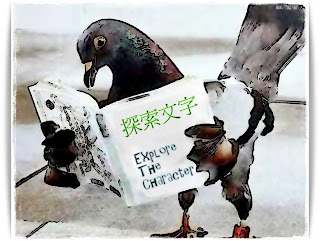generally is indicates all amounts of the subject in a sentence.
umumnya mengindikasikan jumlah keseluruhan dari subjek dalam kalimat
umumnya mengindikasikan jumlah keseluruhan dari subjek dalam kalimat
分析解釋 [analysis]
表示總括, 所總括的成分 [表示全部包括在內]
Biǎoshì zǒngguā, suǒ zǒngguā de chéngfèn [biǎoshì quánbù bāokuò zài nèi]
表示总括, 所总括的成分[表示全部包括在内]
[ENG] to indicate "sum up", the sum of the components [that include all inside]
[INDO] mengartikan KESEMUANYA
跟“是”字合用,說明理由也就是一種強調。如:都是你老磨蹭,害得我們來晚了
Gēn “shì” zì héyòng, shuōmíng lǐyóu yě jiùshì yī zhǒng qiángdiào. Rú: Dōu shì nǐ lǎo móceng, hài dé wǒmen lái wǎn le
跟“是”字合用,说明理由也就是一种强调。如:都是你老磨蹭,害得我们来晚了
[ENG] With the character of "是" is combinated, explain the reasons and also a emphasis on the statement. Such as: it is you always dawdle, which led us to late [還得 = to cause trouble to]
[INDO] akan dibarengi dengan huruf 是 untuk menjelaskan sebuah alasan atau penekanan terhadap ungkapan dari seseorang. contohnya:"gara gara kamu selalu ngulur waktu, membuat kita jadi telat.
表示已經
Biǎoshì yǐjīng
表示已经
[ENG] to indicate that it has "already"
[INDO] menunjukkan arti "telah/sudah"
表示也
Biǎoshì yě
表示也
[ENG] to indicate "also" [with "也" has the similiar function]
[INDO] menunjukkan arti yang sama dengan 也
for example 例子 [contohnya]
- 到遊樂場去,我們都很高興. go to amusement place, we all are very happy.
- 全部都是好看的小說. all of these novels are good novels
- 放了很久,飯菜都冷了. put for a long time, the food has already cold
- 剛買了冰箱,裡面一點都不冷. just bought a refrigerator [freezer], inside of it not cold at all.
[Simplified Character] :
- 到游乐场去,我们都很高兴. Dào yóulè chǎng qù, wǒmen dōu hěn gāoxìng.
- 全部都是好看的小说. Quánbù dōu shì hǎokàn de xiǎoshuō
- 放了很久,饭菜都冷了. Fàng le hěnjiǔ, fàncài dōu lěng le
- 刚买了冰箱,里面一点都不冷. Gāng mǎi le bīngxiāng, lǐmiàn yīdiǎn dōu bù lěng
But when 都 is red as dū [first sound]
it means a town or city
it means a town or city

Comments
Post a Comment